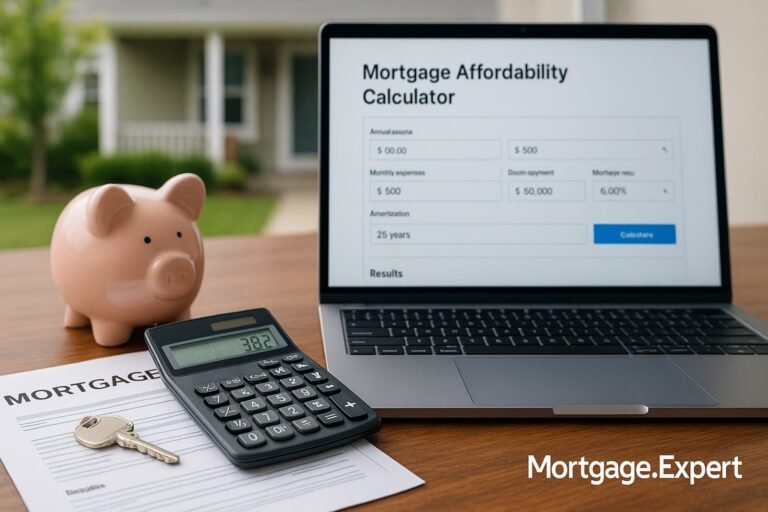
First-Time Home Buyer Loans in Canada: Everything You Need to Know
Buying your first home in Canada? From CMHC-insured mortgages to government-backed loan programs, here’s a complete guide to the types of loans available for first-time homebuyers—including how much you can borrow and how to qualify.
Buying your first home in Canada? Exciting, right? But also kind of overwhelming?
Between figuring out your budget, understanding mortgage types, and navigating all those acronyms—CMHC, HBP, LTT—it can feel like you need a finance degree just to get started. Don’t worry, you’re not alone. If you’re ready to make the leap from renting to owning, this guide is for you.
We’ll walk you through what first-time home buyer loans are, what incentives and programs you might qualify for, how much you need for a down payment, and whether fixed or variable mortgage rates make more sense. Let’s demystify the home buying process and help you move from “just browsing” to homeowner.
What Are First-Time Home Buyer Loans?
Let’s get this cleared up first—there’s no special “first-time buyer loan” in the way you might expect. What we’re really talking about is a combination of mortgage options, tax breaks, rebates, and government programs that help ease the cost of buying your first home.
Whether it’s a standard mortgage or incentives like the Home Buyers’ Plan, these tools are designed to make homeownership more accessible—especially when you’re just starting out.
Incentives & Grants for First-Time Buyers in Canada
If you’re a Canadian citizen or permanent resident buying your first home, you could qualify for a variety of programs. Here are the big ones:
1. Home Buyers’ Tax Credit (HBTC)
This one’s easy. It’s a $5,000 non-refundable income tax credit to help offset some of your closing costs. You claim it when filing your tax return.
2. Home Buyers’ Plan (HBP)
Have RRSP savings? You can withdraw up to $60,000 (tax-free!) from your RRSP to put toward your down payment. Just keep in mind: you’ll need to repay it within 15 years.
3. GST/HST New Housing Rebate
Buying a new build or doing a major renovation? You may be able to recover part of the GST/HST paid on the purchase.
4. Land Transfer Tax Rebates
Depending on your province, you could get a partial or full refund on your land transfer tax. For example, Ontario offers up to $4,000, and Toronto offers a separate municipal rebate up to $4,475.
Fixed vs. Variable Mortgages: Which One’s Right for You?
This question has tripped up more first-time buyers than we can count. Let’s break it down.
Fixed-Rate Mortgages
With a fixed mortgage, your interest rate (and monthly payment) stays the same for the term—whether that’s 2, 3, or 5 years. It’s perfect if you’re the kind of person who sleeps better knowing exactly what your payments will be each month.
Variable-Rate Mortgages
These rates move with the lender’s prime rate. When rates fall, you save. When rates go up… well, your payments might too. But historically, variable rates have saved borrowers money over time. If you’ve got a bit of wiggle room in your budget and can handle a bit of unpredictability, it’s worth considering.
🔎 Pro tip: You can always start with a variable rate and switch to fixed later if you feel uneasy.
Down Payment Rules in Canada
Here’s how much you need to put down based on the purchase price:
- Under $500,000 → Minimum 5%
- Between $500,000 and $999,999 → 5% on the first $500K + 10% on the rest
- $1 million or more → 20% minimum required
Keep in mind, these are just minimums. A bigger down payment can help you avoid extra costs like CMHC insurance—but more on that below.
Can You Borrow Your Down Payment?
Unfortunately, no—you can’t just take out a loan or use a line of credit for your down payment. It must be:
- Saved from your own income
- Withdrawn from your RRSP (via the Home Buyers’ Plan)
- Gifted by a family member (but not repayable!)
Lenders will ask for unredacted bank statements to prove where the money is coming from, especially if they see deposits over $1,000. It’s not about invading your privacy—it’s about following federal anti-money laundering laws.
What is CMHC Insurance and Do You Need It?
If you put down less than 20%, you’ll need mortgage default insurance—commonly referred to as CMHC insurance. This protects the lender (not you!) in case you default on your mortgage.
Yes, it’s an extra cost. But here’s the kicker: waiting years to save 20% could cost you more in rising home prices than you’d pay in insurance premiums.
Example:
Let’s say you waited 3 years to save that full 20%. In that time, home prices went up 14%. That extra $80,000 hike in prices? It could’ve been avoided if you bought sooner and paid a little CMHC instead.
The Bank Wants Your Bank Statements—Here’s Why
Yes, you’ll need to share full bank statements. No, you can’t black out personal stuff. Why? Because the lender needs to verify that:
- Your down payment isn’t borrowed
- The funds are from a legal, traceable source
- You’re not moving money from a line of credit to make it look like savings
It’s about due diligence, protecting our housing market, and ensuring buyers are financially stable.
Final Thoughts: Should You Buy Now or Wait?
There’s no one-size-fits-all answer, but here’s a simple truth: you don’t need 20% down to get started. And with all the programs available, most first-time buyers can get into the market sooner than they think.
The best time to buy a house might’ve been yesterday. The second-best time? When you’re informed, ready, and have the right mortgage strategy in place.
So whether you’re ready to buy now or just laying the groundwork—know that there are resources, advisors, and tools out there to help you do it right.
🏠 Need Help Choosing the Right First-Time Buyer Loan?
From insured mortgages to down payment assistance, our experts can help you find the right loan program—and get pre-approved faster.
Talk to a Mortgage ExpertStuck with a Mortgage Decision?
Don’t stress — our team is here to help. Reach out for free, no-obligation guidance.
Contact the Experts



